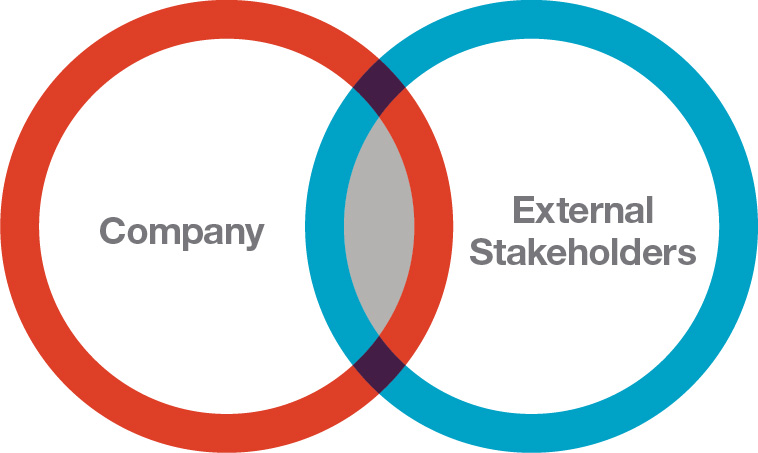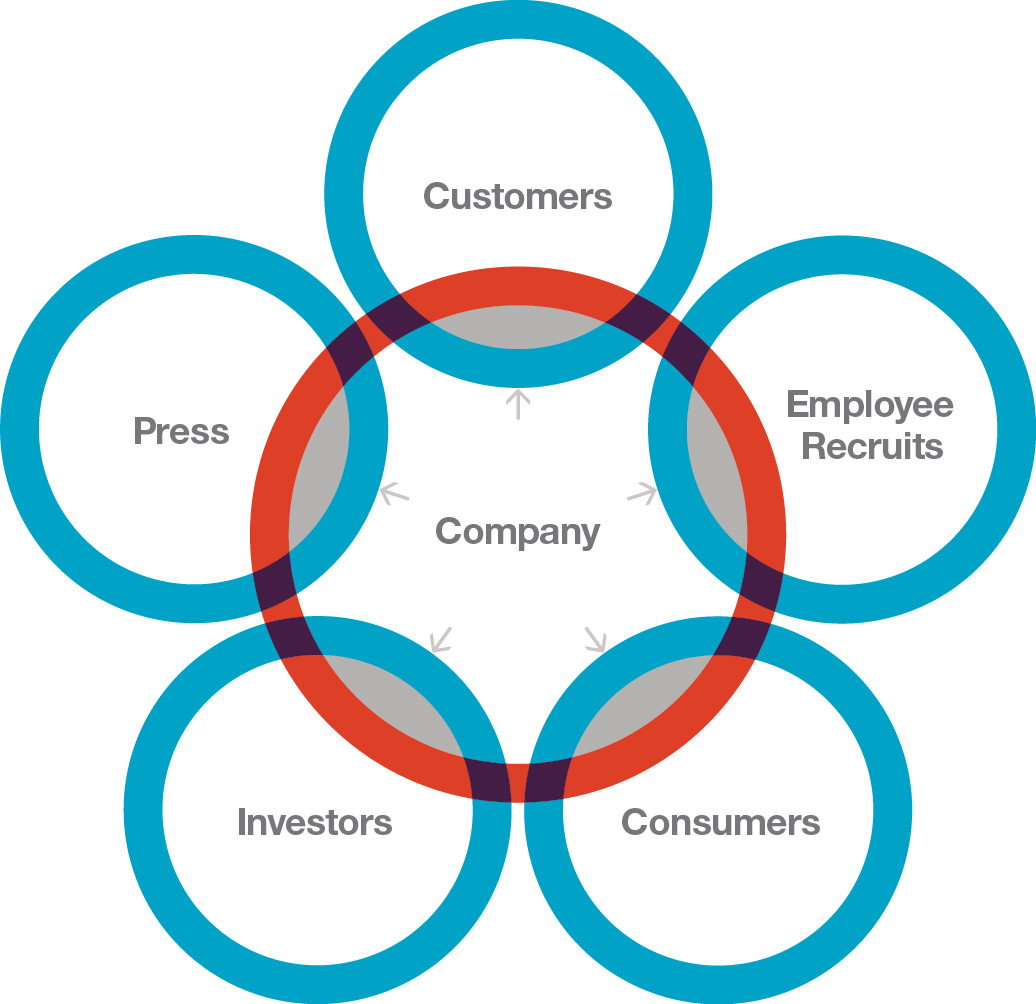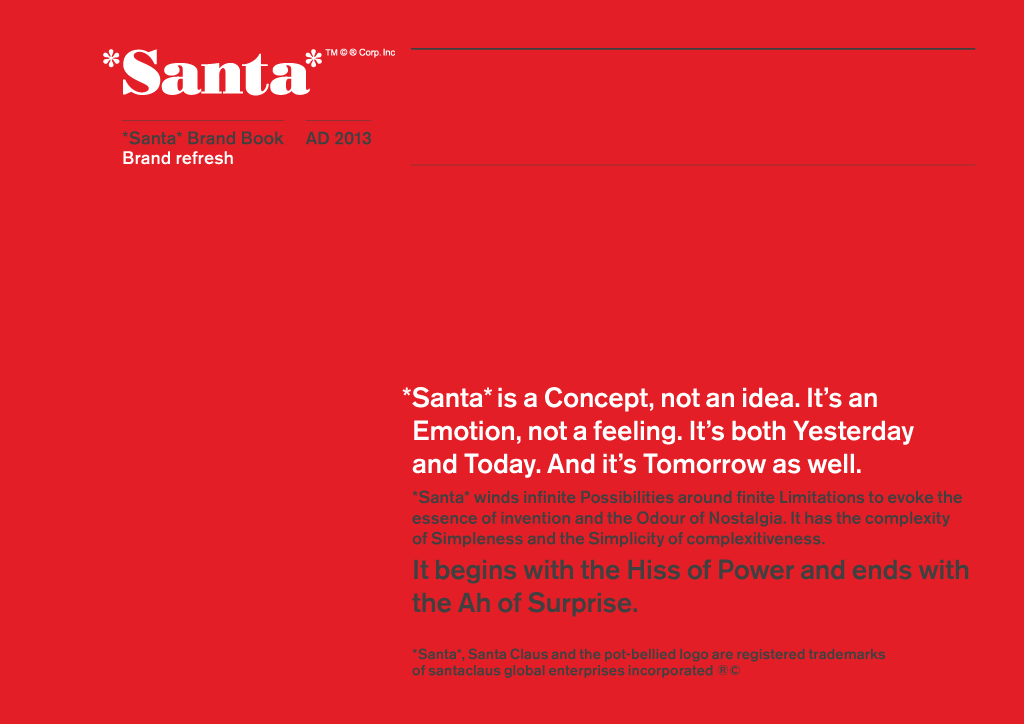Brand is a top priority for many businesses, but it often lacks a clear definition, owner, or action plan.
People frequently conflate the term “brand” with related concepts like vision, awareness, positioning, and design, and so it never really gets articulated, and therefore never really gels.
I’ve been doing brand work for a long time, across a wide range of clients—from massive global conglomerates to edgy startups to small local businesses, and everything in between.
Personally I’ve found that the most effective way to think about brand is to replace it with the word “relationships.” Not relationships in some abstract sense, but specifically: human relationships.
In my work, I often depict these relationships using simple Venn diagrams.


The health of these relationships, individually and in aggregate, is the brand.
Note that:
- These relationships are all specific and deliberate. A strong brand doesn’t appeal to everybody: it appeals to clearly identified groups.
- Not all of these groups are customers. They include any stakeholders who are vital to the organization’s long-term success.
- Internal and external relationships both matter. The internal relationships (aka “culture”) are aligned and optimized to maintain, extend, and deepen the external relationships.
Brand = relationships
This simple way of looking at brand has advantages over others you might encounter. I’ll consider a few of these one at a time. Brand is not…
- Design. Design is wonderful. It’s an integral part of sustaining relationships and facilitating clear, consistent bi-directional communication. I love high-quality design. But the truth is that some beloved businesses have mediocre design (e.g., Craigslist), and some companies and products with exquisite design fail against objectives and/or fail to connect with consumers (e.g., the original incarnation of Google+). Having the perspective that design supports brand, not equals brand, typically leads to better thinking about both.
- Reputation. Reputation management is important, but just as managing your personal reputation doesn’t create character, managing general external perception of your business doesn’t in itself build long-term, strong relationships with specific groups. In reality, many companies survive major PR gaffes but still have strong brands. (Uber, Lululemon, Apple, and Whole Foods all leap to mind.) As with “design,” it’s helpful to look at brand and reputation as related but separate.
- Trust. Trust is a good word, a feel-good word. But it’s also very vague. In practice, how does one become “trusted”—to whom and for what? I’ve seen many companies become smitten with the word “trust” as a key tenet of who they are and what they do and then get bogged down defining the intent and boundaries of what “trust” actually entails.
- Magic. There are many bad actors and bad practitioners out there who insist that brand is ineffable but essential, and that only they have the mystic intuition and creativity to tell you what yours is, for a princely sum. Don’t hire these people. Good consultants can always explain the practical value of their deliverables.
- Bullshit. Given the huge volume of muddled thinking on the topic, I’ve seen many companies reject all discussion of “brand” entirely… then be nagged by questions about how to tell their story, how much to invest in design, who their customers are or should be, or whether their culture is firing on all cylinders. “Brand” admittedly is an imperfect container for all these discussions, but right now, most companies I work with find it easier to live with it than without it.

Here are some alternate definitions of brand that I believe are very close to the mark, but still slightly lacking:
- A promise. Cheryl Heller is a heavy-hitter when it comes to writing and thinking about brand, and she and others have used the phrase “brand promise” to good effect. I recommend her work highly and agree with her general line of thought, but in this instance I quibble with the word choice. To me, a promise is a very narrow agreement—e.g., I promise to take out the trash each Thursday—but a relationship is richer, with multiple dimensions, expectations, shared history, and mutual benefits. Is a relationship reducible to a promise? (E.g., is a marriage reducible to a contract?) I don’t think so.
- A pattern. Marc Shillum of Method wrote an excellent paper a few years ago entitled “Brands as Patterns.” I agree with this paper 100%. If you’re an expert practitioner when it comes to brand, or you want to be, I recommend it highly. But for many businesses, and many CEOs especially, talking about brands as patterns is too esoteric. My plain-English and somewhat crude simplification of Shillum’s paper is that brands are relationships, and all relationships tend to be ritualized: the family dinner, the Amazon 1-click, the Apple product launch experience. With many CEOs, product teams, and marketing teams, I ask: what specific rituals bring our brand to life? This provokes good discussion without having to use the word “patterns” or assume a shared and nuanced understanding of cognitive psychology.
- An experience. It’s vogue-ish now to talk about brand as an “experience” and there is a lot of excellent work being done under the aegis of “brand experience design.” One gotcha with this way of thinking is that it can lead to an impression that “brand” is a carefully curated, Disney-esque, self-contained reality. Experiences are designed; relationships are co-created… depending on the nature of your business, this might be an important distinction. Also, practically speaking, the organizational owner of “experience design”—whether that’s a CXO, CTO, CMO, creative director, product owner, or agency of record—often doesn’t own all aspects of external and internal relationships, and so they don’t really own the brand. Letting experience design be experience design and not “brand experience design” will often foster clearer thinking and expectations regarding accountability.
Think better
I find this overall way of looking at brand very helpful for a number of reasons:
- It’s simple, memorable, and easy to act on.
- It provokes the right kinds of questions.
- It highlights the importance of human relationships to overall business success.
- It scales across many different company sizes and types.
- It makes useful distinctions between brand and design.
- It also makes a useful distinction between brand and marketing, since the two are sometimes unproductively clumped together. (More about this in a future post…)
Also, it includes culture, but in a useful way:
- It clears up a misconception that internal culture and external brand should be identical. Optimal cultures are skillful at maintaining, extending and deepening external relationships. Sometimes this means that the internal culture and external brand mirror each other, sometimes not.
- It clears up a misconception that optimal cultures maximize “niceness” or the comfort of the internal team. Culture is focused outward, not inward. Companies run into trouble when they become too insular and caught up in their internal story. Also, many employees tend to find it vitalizing to give to the world and think beyond themselves.
In other words, brand doesn’t have to be bullshit.
It can be what gives business meaning.


Leave a Reply